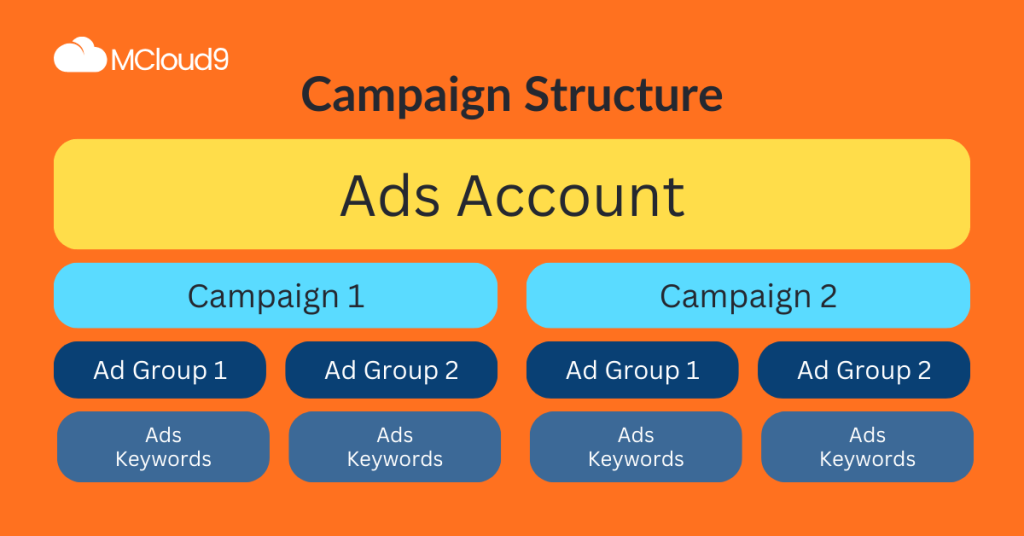If you’re an entrepreneur or a business professional looking to make your mark in the online business landscape, you’ve probably heard of PPC marketing. It’s a powerful tool in your digital marketing arsenal that can drive targeted traffic to your website, boost conversions, and grow your brand’s online presence. According to Statista, global search advertising spending is projected to reach over 190 billion U.S. dollars by the end of 2024. In this comprehensive guide, we’ll demystify the world of PPC marketing, break down its intricacies, and equip you with the knowledge to launch successful PPC campaigns. So, let’s dive in and explore this exciting world of PPC marketing together!
Table of Contents
What Is PPC Marketing?
PPC marketing, also known as pay-per-click marketing, is a digital advertising model that allows advertisers to display their ads on various online platforms. The essence of PPC is simple: you pay each time a user clicks on your ad. It’s like a digital auction where you bid on keywords related to your product or service, and if your bid wins, your ad appears in relevant search results or on websites that offer PPC advertising.
MCloud9 Tip: Looking to expand your online presence? Consider incorporating PPC into your marketing strategy. With MCloud9 as your trusted web hosting and domain registration company, you can seamlessly integrate your website with PPC campaigns to reach a broader audience.
Why Is PPC Important?
Now that you know what PPC marketing is, you might wonder why it’s crucial for your online business. Well, there are several reasons:

- Instant Visibility: PPC ads provide instant visibility on search engine results pages (SERPs) and websites. As soon as your campaign is live, your ads are out there for the world to see.
- Targeted Audience: PPC allows you to target specific demographics, interests, and locations, ensuring your ads reach the right people at the right time.
- Cost Control: With PPC, you have full control over your budget. You decide how much you’re willing to pay for each click, so there are no surprises in your marketing expenses.
- Measurable Results: PPC provides detailed analytics, allowing you to track the performance of your campaigns in real-time. You can see what’s working and what needs improvement.
- Increase Conversions: PPC ads can lead potential customers directly to your landing page, increasing the chances of conversion, whether it’s making a purchase, filling out a form, or signing up for a newsletter.
- Align SEO and PPC: Combining SEO (Search Engine Optimisation) and PPC can enhance your overall online presence. When done right, PPC and SEO work together like a well-oiled machine.
So, if you’re looking to grow your business and expand your brand’s online presence, PPC marketing is a powerful tool in your toolkit. PPC marketing can benefit your business by increasing brand visibility, driving targeted traffic to your website, generating leads or sales, and providing valuable insights into your target audience and their online behaviour. It can also complement your other marketing and advertising efforts, helping you reach your business goals more effectively.
How Does PPC Work?
Now, let’s get into the nitty-gritty of how PPC actually works. It’s a bit like a behind-the-scenes magic show, but I promise to make it easy to understand.
- Advertisers Bid on Keywords: In the PPC world, advertisers bid on keywords relevant to their products or services. These keywords are what users type into search engines when looking for something online.
- Ad Auction: When a user initiates a search, search engines like Google conduct a lightning-fast auction to determine which ads to display. The winner is the advertiser with the highest bid and the most relevant ad.
- Ad Placement: If you win the auction, your ad gets placed in the coveted ad spots on the search engine results page or on websites that participate in the PPC program.
- User Clicks: Here comes the moment of truth. If a user clicks on your ad, you pay a fee. This fee is what makes it “pay-per-click.”
- Landing Page: The user is directed to your landing page, where they can take the desired action, such as making a purchase or signing up for your newsletter.
Voilà! That’s the basic rundown of how PPC works. It’s a dynamic and efficient way to connect with your target audience.
Pros and Cons of PPC Marketing
Like any marketing strategy, PPC has its strengths and weaknesses. Let’s break them down:
Pros of PPC Marketing
- Quick Results: You can see immediate results once your PPC campaign is live, making it perfect for short-term promotions or events.
- Targeted Advertising: PPC allows you to target specific demographics, interests, and locations, ensuring your ads reach the right audience.
- Control Over Budget: You set your budget, also known as ad spend, and there are no hidden costs. You only pay when someone clicks on your ad.
- Measurable ROI: PPC provides detailed analytics, allowing you to track the performance of your campaigns and calculate your return on investment (ROI).
- Brand Awareness: Even if users don’t click on your ad, they still see your brand, increasing awareness.
- Flexibility: You can adjust your campaigns in real-time based on performance, ensuring your marketing efforts are always optimised
Cons of PPC Marketing
- Cost: Competitive keywords can be expensive, and if not managed well, your budget can get drained quickly.
- Learning Curve: PPC requires a learning curve to understand keyword research, bidding strategies, and ad creation.
- Ongoing Management: Successful PPC campaigns require ongoing monitoring and adjustments to stay effective.
- Click Fraud: In some cases, competitors or malicious entities may click on your ads to deplete your budget.
- Ad Blindness: Some users ignore ads, focusing solely on organic search results.
Now that you know the pros and cons, you can make an informed decision about whether PPC is right for your business.
PPC vs. SEO
Before we go any further, it’s essential to distinguish between PPC and SEO. While they both aim to improve your online presence, they operate differently.

PPC (Pay-Per-Click) Marketing involves paid advertising, where you bid on keywords and pay for each click on your ad. It provides immediate visibility but requires a budget. SEO (Search Engine Optimisation), on the other hand, is the process of optimising your website to rank organically in search engine results. It’s a long-term strategy that requires time and effort but can yield sustainable results without ongoing costs.
So, which one should you choose? Well, it depends on your goals, budget, and timeline. Many successful digital marketing strategies combine both PPC and SEO to maximise their online presence.
PPC Advertising Platforms (Google Ads)
When it comes to PPC advertising, one platform stands head and shoulders above the rest: Google Ads. Formerly known as Google AdWords, Google Ads is the go-to platform for PPC campaigns. The 2023 Google Ads average click-through rate is 6.11% across industries. Here’s why it’s a powerhouse in the digital marketing world:
- Massive Reach: Google processes billions of searches daily, giving your ads access to a vast audience.
- Advanced Targeting: Google Ads provides precise targeting options, allowing you to reach your ideal customers based on demographics, interests, and behaviours.
- Keyword Research Tools: Google offers robust keyword research tools to help you find the most relevant keywords for your campaign.
- Budget Control: You have full control over your daily budget and can adjust it at any time.
- Ad Formats: Google Ads offers various ad formats, including text ads, display ads, video ads, and shopping ads, to suit your marketing goals. Advertisers who run both Google Search and Google Display campaigns experience an 11% increase in Search ad conversions compared to advertisers who exclusively run Search ads.
- Performance Metrics: Detailed analytics allow you to measure the success of your campaigns and make data-driven decisions.
How PPC Campaigns Work (Overview and Structure)
Understanding the structure of a PPC campaign is crucial for success. Let’s break it down step by step:

- Account Setup: Start by creating an account on the PPC platform of your choice, like Google Ads. This is where you’ll manage all your campaigns.
- Campaign Creation: Within your account, you’ll create campaigns. Each campaign has a specific goal, such as promoting a product or driving traffic to your website.
- Ad Groups: Within each campaign, you’ll set up ad groups. These are clusters of related keywords and ads. For instance, if you’re a shoe retailer, you might have groups for “running shoes,” “sneakers,” and “boots.”
- Keyword Research: Research and select relevant keywords for each ad group. Use tools like Google’s Keyword Planner to identify high-performing keywords.
- Ad Creation: Craft compelling ad copy that entices users to click. Your ad should be relevant to the selected keywords and offer a clear value proposition.
- Bidding: Determine how much you’re willing to pay for each click. This is where your budget comes into play. The higher your bid, the more likely your ad will appear in prominent positions.
- Ad Extensions: Enhance your ads with extensions, such as site link extensions or callout extensions, to provide additional information and encourage clicks.
- Quality Score: Google assigns a Quality Score to your ads based on their relevance and performance. Higher Quality Scores can lead to lower costs and better ad placements.
- Monitoring and Optimisation: Keep a close eye on your campaign’s performance. Adjust your bids, ad copy, and keywords based on data and insights from the platform.
- Reporting: PPC platforms provide detailed reports, allowing you to analyse the success of your campaigns. Use these insights to refine your strategy.
Common Types of PPC Ads
PPC advertising offers various ad formats to suit different marketing goals. Here are some common types of PPC ads:
- Search Ads: These ads appear at the top of search engine results when users enter specific keywords. They are text-based and link to your website.
- Display Ads: Display ads are visual banners that appear on websites within the Google Display Network. They can include images, text, and even videos.
- Video Ads: Video ads are short video clips that play before, during, or after YouTube videos. They are an engaging way to reach your audience.
- Shopping Ads: If you’re an e-commerce business, shopping ads showcase your products with images, prices, and descriptions directly in search results.
- Remarketing Ads: Remarketing ads target users who have previously visited your website but didn’t convert. These ads aim to bring them back to complete an action.
Each type of ad has its unique benefits and best practices. Depending on your goals, you may choose one or a combination of these ad formats in your PPC campaigns.
PPC Keyword Research
Keyword research is the foundation of any successful PPC campaign. Here’s how to go about it:
- Brainstorm Keywords: Begin by brainstorming a list of keywords relevant to your business, products, or services. Think about what your target audience might search for.
- Use Keyword Tools: Utilise keyword research tools like Google’s Keyword Planner, SEMrush, or Ahrefs to expand your list and identify high-performing keywords.
- Competitive Analysis: Study your competitors to see what keywords they are targeting. This can help you discover new opportunities.
- Long-Tail Keywords: Consider long-tail keywords, which are longer and more specific phrases. They may have less competition and higher conversion rates.
- Negative Keywords: Identify negative keywords—terms you don’t want your ads to show for. For example, if you sell luxury watches, you might want to exclude “cheap watches” as a negative keyword.
- Group Keywords: Organise your keywords into ad groups based on relevance. This makes it easier to create targeted ad copy.
Effective keyword research is an ongoing process. Regularly review and update your list to ensure your PPC campaigns stay competitive.
Measuring Performance – Quality Score and CPC
As you run your PPC campaigns, it’s essential to keep a close eye on two critical metrics: Quality Score and CPC (Cost Per Click).

- Quality Score: This metric, provided by Google Ads, evaluates the relevance and quality of your ads, keywords, and landing pages. It’s measured on a scale from 1 to 10, with higher scores indicating better quality. A high Quality Score can lead to lower CPC and better ad positions.
- CPC (Cost Per Click): CPC is the amount you pay each time a user clicks on your ad. It can vary widely depending on factors like keyword competitiveness, industry, and bid strategies. Advertisers typically set a maximum bid amount they are willing to pay for a click, but the actual amount paid per click can be lower than the maximum bid. Monitoring your CPC helps you manage your budget effectively.
MCloud9 Tip: To improve your Quality Score and lower your CPC, ensure that your landing pages are fast-loading and user-friendly. MCloud9’s hosting services can help you achieve this, providing a seamless experience for your website visitors.
Best Practices for a Quality PPC Strategy
Now that you’re well-versed in the fundamentals of PPC marketing, let’s delve into some best practices to create a winning strategy:
- Conduct Thorough Keyword Research: Invest time in researching and selecting the most relevant keywords for your campaigns. This forms the basis of your PPC success.
- Craft Compelling Ad Copy: Write persuasive copy that grabs the user’s attention and communicates the value of your product or service.
- Use Ad Extensions: Take advantage of ad extensions to provide additional information and increase the visibility of your ads.
- Optimise Landing Pages: Ensure that your landing pages are user-friendly, load quickly, and offer a seamless experience for visitors.
- Test and Iterate: A/B test different ad variations, keywords, and landing page elements to identify what works best for your audience.
- Monitor and Adjust: Regularly check your campaign performance and make data-driven adjustments to improve results.
- Budget Wisely: Set a realistic budget and monitor your spending to avoid overspending or exhausting your budget too quickly.
- Stay Updated: Stay informed about industry trends and updates in the PPC world to keep your campaigns competitive.
Remember, PPC marketing is dynamic, and continuous improvement is key to achieving success.
FAQ for PPC Marketing
What is PPC marketing?
PPC (Pay-Per-Click) Marketing is a form of online advertising that allows advertisers to pay for clicks on their ads. It is a way of buying visits to your website, rather than attempting to “earn” those visits organically.
How does PPC advertising work?
PPC advertising works by placing ads in prominent positions on search engine results pages (SERPs) or other websites. Advertisers bid on keywords or phrases that are relevant to their target audience. When a user searches for those keywords, the ad may appear, and if the user clicks on the ad, the advertiser is charged for that click.
How can I optimise my PPC campaign?
To optimise your PPC campaign, you can start by researching and selecting the right keywords to target. You should also continuously monitor and analyse your campaign performance, make adjustments to your ad text and targeting settings, and regularly test different variations of your ads to see what performs best.
What is ad rank?
Ad rank is the position of your ad on a search page or other advertising platform. It is determined by a combination of factors such as your bid amount, ad quality, and relevancy to the user’s search query. Higher ad rank means your ad is more likely to be seen and clicked on.
What are some popular PPC tools?
Some popular PPC tools include Google Ads (formerly Google AdWords), Microsoft Advertising (formerly Bing Ads), and various third-party tools such as SEMrush, Ahrefs, and WordStream. These tools can help with keyword research, campaign management, and performance tracking.
Can I use PPC marketing on social media sites?
Yes, PPC marketing can be used on social media sites such as Facebook, Instagram, Twitter, and LinkedIn. Each platform has its own advertising options and targeting capabilities, allowing you to reach your desired audience on social media.
In Conclusion
In this easy guide to PPC marketing, we’ve covered the fundamentals of pay-per-click advertising, why it’s important, how it works, and the pros and cons. We’ve also explored the distinction between PPC and SEO, the power of Google Ads, the structure of PPC campaigns and ad types, keyword research, and essential metrics like Quality Score and CPC.
Now armed with this knowledge, you’re ready to dive into the world of PPC marketing and start driving targeted traffic to your website, boosting conversions, and growing your online brand presence.
Remember, success in PPC marketing requires continuous learning and optimisation. So, start small, test, and refine your strategies as you go. With dedication and the right approach, PPC marketing can be a game-changer for your online business.
And if you’re seeking a reliable web hosting and domain registration company to support your online endeavours, look no further than MCloud9. We’re here to help you take your digital marketing efforts to the next level.
So, go ahead, take the first step into the exciting world of PPC marketing, and watch your online business soar!


